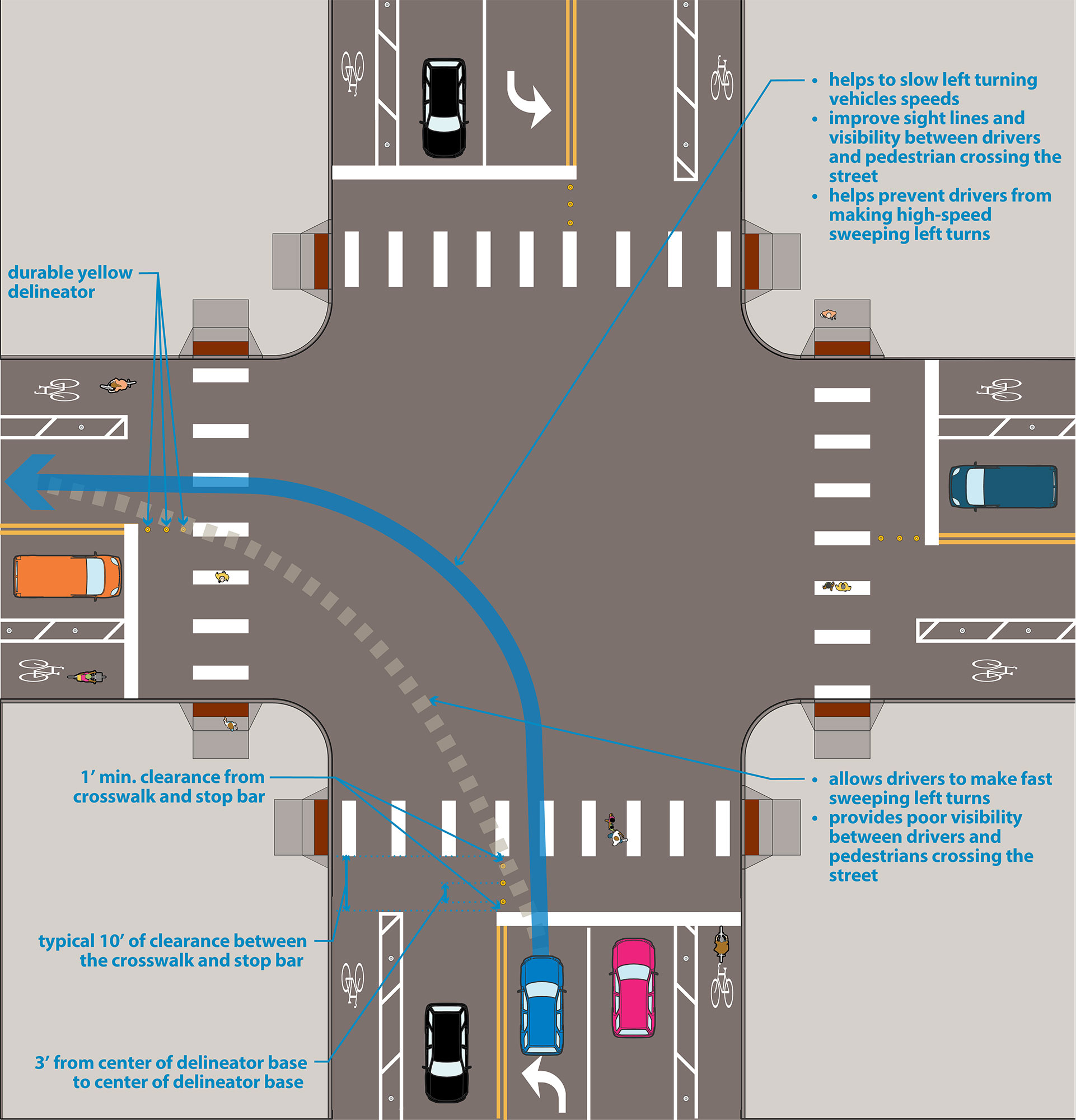Delineator hardened centerlines tighten and calm left turns, increase the visibility of pedestrians in the crosswalk for motorists, and modifies the turning angle to create safer, slower left turns with no change in traffic capacity.
Introduction
Hardened centerlines utilize plastic delineators or “bollards” to tighten and calm left turns, increase the visibility of pedestrians in the crosswalk for motorists, and modifies the turning angle from the cross street onto the receiving roadway to create safer, slower left turns with no change in traffic capacity.
Hardened centerlines provide the following benefits:
- Help slow left-turning vehicle speeds.
- Improve sight lines and visibility between drivers and pedestrians crossing the street.
- Helps prevent drivers from making high-speed sweeping left turns.
Figure 3.7H.1:
Delineator hardened centerlines
Design Considerations
|
Locations
|
- Delineator hardened centerlines should be explored at locations where there is a need to slow left turning vehicle speeds and improve sightlines.
- Delineator hardened centerlines should only be installed on streets with a striped centerline.
- Delineator hardened centerlines can be used at dedicated left turn lanes.
- Delineator hardened centerlines can be used where a shared center turn lane is present.
- Given the need for frequent maintenance, delineator hardened centerlines should be prioritized at locations where there is a higher potential conflict between left turning vehicles and crossing pedestrians.
|
|
Bollard type
|
A durable yellow style delineator is to be used. |
|
Delineator placement and spacing
|
- Delineator hardened centerlines are to be placed in the middle of the striped centerline.
- When the centerline is not present, typically between the crosswallk and stop bar, the delineator hardened centerline is to be placed in the middle of where the striped centerline would typically be.
- The delineator hardened centerline consists of three delineators and provides a clearance of at least 1' from all striping, including the stop bar and crosswalk.
- Designers can consider a 1' reaction adjacent to travel lanes on high volume streets or if delineator hardened centerlines are frequently missing or damaged.
- Hardened centerlines can be considered to move one bollard, or 3', behind the stop bar when turning movements are in direct conflict with the preferred placement location.
- Spacing between the delineators, from the center of the base, is to be 3’.
|
|
Installation considerations
|
Delineators are to be bolted to the pavement per manufacturer specifications. If used on a bridge deck, the delineators are to be adhered with butyl pads.
|
|
Maintenance considerations
|
-
Due to their exposure and location at intersections with typically high vehicle volumes, hardened centerlines may require more frequent replacement.
-
When delineators are routinely missing or damaged, changes to placement and overall design are to be considered to maintain the effectiveness as a traffic calming tool.
|



